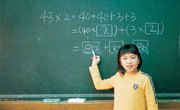
Inquiry-based learning is an approach to teaching that relies on student-centered activities and questioning, rather than the traditional teacher-centered approach, relying on textbooks and lecturing. The instructor’s role is more as a mentor than authority; she uses well-crafted problems and the minimal amount of information the students will need, leading them to discover the answers and come to their own understanding of the ideas.
The Scientific Method and Teaching
When using inquiry-based learning teachers rely on a set of steps similar to the ones a scientist uses to design and test a hypothesis. She develops a set of questions or encourages the students to come up with some questions that are on-point for the concept she wants them to understand. Then she has the students gather information from either resources she provides or ones they find on their own.
When the students have enough information, they apply it to the problem by breaking it out into categories or making an outline that organizes the information in order of importance to the subject. At that point the teacher can lead a class discussion, which gives him a chance to emphasize how the information relates to the topic and helps the students see how the data they’ve collected goes toward answering the questions. Ultimately the class will reach a conclusion that uses their research to answer the original questions, much as a scientist uses experimental results to confirm or rule out a hypothesis.
Inquiry-Based Math Learning
Teaching and learning math involves both grasping the concepts and applying the procedures to theoretical and practical problems. Inquiry-based learning focuses primarily on the big ideas first. The math teacher encourages students to look for patterns and relationships and try out different approaches to solving the problems he presents to them. He encourages the students to be able to explain how they solved the problem, rather than just get the right answers.
Using Money
Since even very young children have some grasp of the idea that things cost money, the teacher can use money to talk about math concepts and skills, from counting to addition and subtraction. Older elementary students can use money to study fractions and decimals. The teacher can build on those concepts to move on to percentages (which are, after all, fractions of 100).
Interdisciplinary Approaches
Using an inquiry-based learning approach is also a way to tie math learning into a wider curriculum. For instance, a teacher can include lessons on the history of math, leading students to find out where the classic axioms and theorems originated, or how the “zero” entered into Western numbers and what that did to the way people do arithmetic.
References
About the Author
Manny Frishberg made his home on the West Coast for more than 30 years. He studied writing and journalism at Portland State University. His articles have appeared in Wired News.com, "Discover," the "Puget Sound Business Journal" and dozens of other websites and magazines and has earned four writing awards from the Society for Professional Journalism.
Photo Credits
Hemera Technologies/AbleStock.com/Getty Images
